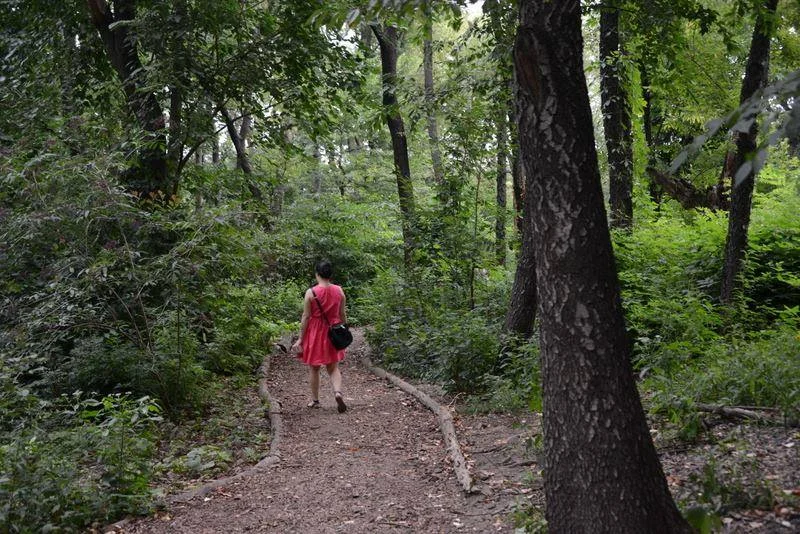US cities are pouring more concrete for sidewalks and asphalt for roads while they do away with trees, according to a new analysis by scientists at the US Department of Agriculture.
The researchers found that 36 million trees are cut down in urban areas each year, and 167,000 acres of impervious areas (concrete, asphalt, etc.) are added every year.
This rapid swapping of green for gray is harmful to the people living in these spaces, and it sets cities up for long-term environmental decline, according to the scientists.
“Trees in urban areas help ward off pollution, providing a long list of benefits for people and the planet,” Rolf Skar, forest campaign director for Greenpeace USA, told the Guardian. “This news proves once again that we need to prioritize adding more green spaces to our cities.”
Take Action: Ensure All Communities Can Withstand Climate Disaster
Trees clean the air, lower temperatures in the summer, raise temperatures in the winter, and help to mitigate flooding, according to the Guardian.
Hurricane Harvey caused such significant damage in Houston, Texas, last year because city planners have dramatically expanded impervious surfaces that do not absorb water like trees in soil.
 A man helps a woman in floodwaters from Tropical Storm Harvey Sunday, Aug. 27, 2017, in Houston, Texas. The remnants of Hurricane Harvey sent devastating floods pouring into Houston Sunday as rising water chased thousands of people to rooftops or higher ground.
A man helps a woman in floodwaters from Tropical Storm Harvey Sunday, Aug. 27, 2017, in Houston, Texas. The remnants of Hurricane Harvey sent devastating floods pouring into Houston Sunday as rising water chased thousands of people to rooftops or higher ground.
Trees also improve the well-being of people living in cities by reducing stress, lowering blood pressure, and improving mood.
And they play an essential role in mitigating climate change by absorbing greenhouse gas emissions and regulating ecosystems.
The researchers found that trees declined in the urban areas of 45 states between 2009 and 2014, and 23 states experienced substantial declines.
Read More: Why Cities May Be the Key to Stopping Climate Change
Alabama, Florida, and Georgia saw the steepest overall declines, while Oklahoma and Washington, DC, saw the sharpest reductions in purely urban areas.
These declines follow global patterns of deforestation and urbanization.
More than 7 million hectares of forest are lost every year, which is roughly 48 football fields worth of trees each minute.
Meanwhile, nearly 70% of people are expected to live in cities by 2050.
Read More: 8 Ways Cities Are Fighting Climate Change and Environmental Decay
Trees don’t have to be chopped down for cities to accommodate growing populations. In fact, various cities around the world are learning that quality urban life depends on the incorporation of green spaces.

Singapore, for instance, is one of the densest city-states in the world, yet its model of urban planning is unique for its emphasis on green spaces. The city has set aside 250 acres of real estate for an urban garden to act as the city’s lungs, created one of the largest freshwater urban reservoirs in the world, and planted more than 3 million trees throughout its neighborhoods.
Read More: London’s Mayor Just Promised to Make the City Zero-Carbon and 50% Green by 2050
Latin American cities have the highest ratio of green space to population, according to Siemens, while Vancouver insists that no resident should live more than five minutes’ walking distance from a public park.
In the US, there’s also a growing awareness of the importance of green spaces, especially as climate change intensifies.
For example, Charleston, South Carolina, is able to mitigate rising sea levels with extensive green spaces. To this end, the city bought 48 flood-prone homes last year for conversion into green spaces.
Walking around Charleston and smelling the fragrant air, it’s easy to see the appeal of adding more trees.
“Trees improve city living,” Paul de Zylva, senior nature campaigner for Friends of the Earth, told the Guardian. “It’s worrying that trends show so many are being lost in US cities when leading cities worldwide are experiencing the many benefits of investing in trees as part of their plans to improve urban life.”
Global Citizen campaigns on the United Nations’ Global Goals, which call for cities to invest in green spaces. You can take action on this issue here.